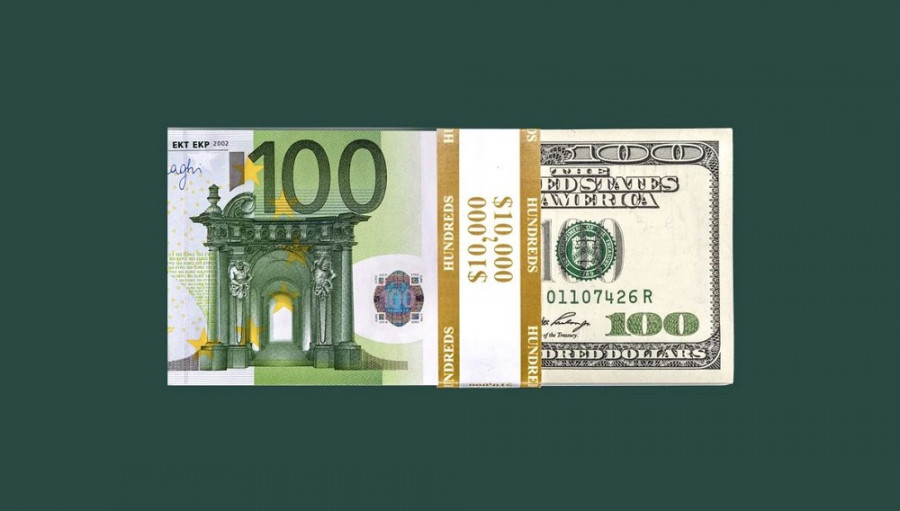The economic calendar for the upcoming week is packed with important events. The first week of every month is traditionally the most informative for EUR/USD traders, and June will be no exception. The calendar includes U.S. ISM indices, Eurozone inflation reports, and key U.S. labor market data. As a "bonus," there's also the June meeting of the European Central Bank. In other words, the coming week promises to be eventful, informative, and highly volatile.
Monday
The final PMI data for May will be released during the European session on Monday. According to forecasts, the final estimates are expected to match the preliminary ones, so traders will likely ignore this release.
However, events during the U.S. session are likely to provoke increased volatility. In particular, we'll see the May ISM Manufacturing Index. This indicator has declined for four consecutive months and has been in contraction territory (below the 50-point mark) for the past two months. Analysts forecast a slight increase to 49.3 in May. If contrary to expectations, the index rises above 50, the dollar will get significant support.
Several Federal Reserve officials will also speak during the U.S. session: Dallas Fed President Lorie Logan (a non-voting member this year), Chicago Fed President Austan Goolsbee (a voting member), and Fed Chair Jerome Powell.
Tuesday
We will receive important Eurozone inflation data in the first half of the day. The overall Consumer Price Index (CPI) is forecasted to slow to 2.0% year-on-year after two months at 2.2%. The core CPI, excluding energy and food prices, is also expected to decline from 2.7% to 2.4%. Such a result would support another ECB rate cut, anticipated at the June meeting.
However, it's important to note that a 25-basis-point cut in June has already been priced in. Thus, May's slowdown in inflation is unlikely to impress the market. The euro may ignore it unless inflation unexpectedly accelerates, in which case EUR/USD buyers would get a significant boost.
JOLTs job openings data for April will be published during the U.S. session. Last month, job openings came in at 7.19 million (below the forecast of 7.49 million), marking two months of decline. Analysts expect another decrease to 7.03 million. Although it's a lagging indicator, it could reinforce a bearish view of the dollar.
Wednesday
Another labor market report from ADP will be published on Wednesday. It is a barometer for the labor market ahead of the official Nonfarm Payrolls. Forecasts suggest an increase of only 110,000 jobs in May, a weak result that doesn't bode well for the Nonfarms even though the two reports don't always correlate. Last month, ADP showed a gain of 62,000 jobs, while the official Nonfarms were +177,000.
The ISM Services PMI will also be released. It is expected to rise to 52.0 in May from 51.6 in April. For dollar bulls, it's crucial that the index remains above the 50-point expansion mark.
Key Fed speakers on Wednesday include Atlanta Fed President Raphael Bostic (who is non-voting this year) and Fed Governor Lisa Cook (who is a voting member).
Thursday
The most important event on Thursday is the European Central Bank's June meeting. The baseline scenario anticipates a 25-basis-point rate cut. Given previous statements by ECB officials like Francois Villeroy de Galhau, Pierre Wunsch, and Mario Centeno, this decision has already been priced in. Thus, the focus will be on the ECB statement and Christine Lagarde's rhetoric.
There's a chance for a "hawkish cut"—the ECB could lower rates but pair it with hawkish rhetoric. For example, ECB President Fabio Panetta recently said the ECB's room for further rate cuts is "limited" and called for a pragmatic and flexible approach. If the ECB signals similar views, the euro could strengthen significantly.
Fed speakers on Thursday include Governor Adriana Kugler and Philadelphia Fed President Patrick Harker (who is retiring soon).
Friday
On Friday, all attention will shift to the May Nonfarm Payrolls. Forecasts suggest an increase of just 130,000 jobs after April's 177,000 rise. Unemployment is expected to remain at 4.2%, and average hourly earnings growth is forecasted to slow to 3.8%. The labor force participation rate is expected to decline to 62.5%.
If Nonfarm data meets or falls below forecasts, the dollar could come under renewed pressure.
Conclusions
The first week of June promises to be informative and volatile. The dollar will react to the ISM indices and Nonfarms, while the euro will respond to inflation reports and the ECB meeting results. Additionally, traders will closely watch news about U.S.-China and U.S.-EU trade negotiations. Last Friday, Donald Trump accused China of violating agreements to eliminate tariffs on strategic raw materials, stalling the negotiation process. China, in turn, criticized the U.S. for turning Asia into a "powder keg" and condemned Pentagon chief Peter Hegseth's comments labeling China as a threat in the Indo-Pacific region.
If tensions between the superpowers escalate, the dollar will face heavy pressure, even if supported by ISM data and Nonfarms. I believe the dollar remains vulnerable, so it makes sense to use EUR/USD pullbacks to open long positions. The first (and primary) upside target remains 1.1430 — the upper line of the Bollinger Bands on the D1 timeframe.













